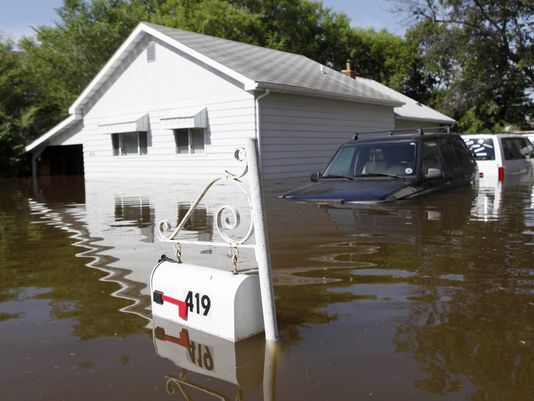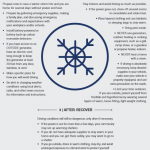
Hard lessons about flood insurance policies
Patricia Smith’s frustration alone could flood a few more thousand homes in metro Detroit.
After her Oak Park basement was hit with several inches of water, Smith, 66, was angry when her insurance agent said he wasn’t sure what coverage she had. Later, he said she was out of luck and did not have a rider for sewer backups on her Allstate policy.
“You wrote the policy. Why didn’t you offer me what I needed in the first place?” the Detroit Edison retiree remembered she asked the agent.
Metro Detroit saw historic flooding and sewer backups after a quick, brutal rainstorm on Aug. 11. Gov. Rick Snyder declared a state of disaster for Macomb, Oakland and Wayne counties. In the aftermath, we’re learning the hard way about storm coverage. The lessons can be valuable to others across the nation who could be hit in the future.
Flood insurance and sewer coverage are not the same thing.
Many sewer lines across the country are aging. Pipelines that handle both storm water and sewage can become overwhelmed and back up.
J. Robert Hunter, director of insurance for the Consumer Federation of America, said his son faced damage from a backed-up sewer in Baltimore and was covered. But he said many people don’t realize they need to buy an endorsement or they don’t ask whether their standard policy offers the coverage.
Sewer backup coverage might add $40 to $50 to an annual premium, according to the Insurance Information Institute.
Kristie Taber, manager of consumer assistance and insurance investigations for the Michigan Department of Insurance and Financial Services, said some people ask about flood coverage but not about the extra rider for a sewer backup.
Taber, who met with storm victims at an information event in Southfield, Mich., said some homeowners have coverage ranging from $2,500 to $5,000 or even $10,000 for sewer backups.
Kim Purcell, 53, said she was happy her USAA policy covers up to $10,000 in damage to her Berkley, Mich., basement. She lost carpeting, a sewing machine, a small refrigerator and other items. “Thank goodness, I had something,” she said.
Too many don’t have coverage. Warren, Mich., Mayor Jim Fouts suggested Wednesday that state legislation is needed for more disclosure and regulation regarding “Truth in Flood Insurance.” One proposal: Mandate a minimum flood insurance requirement for homeowners’ policies at reasonable and competitive prices.
Do not file a claim if you’re not covered
Filing a claim typically makes you a riskier customer, said Laura Adams, a senior analyst for InsuranceQuotes.com.
Think twice when you talk to a claims hotline, too. I had an Allstate catastrophic team claims agent urge me to quickly file a claim when the sewer backup hit my basement. I didn’t know if I had coverage; neither did the hotline representative. But the claims representative kept insisting I might qualify for a low-interest loan during a disaster, even if my claim was denied. My husband and I thought that didn’t make sense. But later I reconsidered, especially after a restoration guy told me I had to have coverage. In a day or so, my claim was denied. I didn’t have the rider. Now I’m worried my rates will go up or the insurer could refuse to renew. But an Allstate spokesperson said filing a claim that is not covered under a policy would not impact rates or renewals.
Consumer advocate Hunter said he felt the claims line acted in bad faith by encouraging an unnecessary claim, and he stressed that consumers should not file a claim if they’re not covered.
Allstate said its claims reps encourage customers to file so the company can start the claims process and fully investigate the damage to begin rebuilding.
Would rates go up anyway in my area?
“It’s too early to determine the impact the Aug. 11 storm will have on rates,” said Meghan Cass, a spokeswoman for Allstate. “We look at an area’s loss history over many years before making changes.”
You might qualify for a tax break
Some might say a tax break is a silver lining in storm clouds. But federal tax rules have tough limits on personal losses.
First, you must reduce the casualty loss by $100 first. Then, you must further reduce the total of all of your losses by 10% of your adjusted gross income.
Meaning, if you faced $5,000 in uncovered property losses but had an AGI of $50,000 you would not see any tax break under the normal tax rules.
“It’s very hard to get this deduction,” said George W. Smith IV, a certified public accountant and partner at George W. Smith & Co. in Southfield.
See Internal Revenue Service Form 4684 for the long list of rules. The IRS expects you to file a claim if you’re covered.
IRS Publication 584 can help with rules on casualty, disaster and theft loss.
Another point: If the property is a rental or is used for business purposes, the $100 floor and the reduction for 10% of adjusted gross income don’t apply, said Patricia Bojanic, certified public accountant for Gordon Advisors in Troy, Mich.
The stress factor remains high in the aftermath of a disaster, but understanding more about what might be covered could ease a little anxiety.
Contact Susan Tompor at stompor@freepress.com
http://www.usatoday.com/story/money/columnist/tompor/2014/08/31/susan-tompor–hard-lessons-about-flood-insurance-policies/14823845/

 Next Post
Next Post


